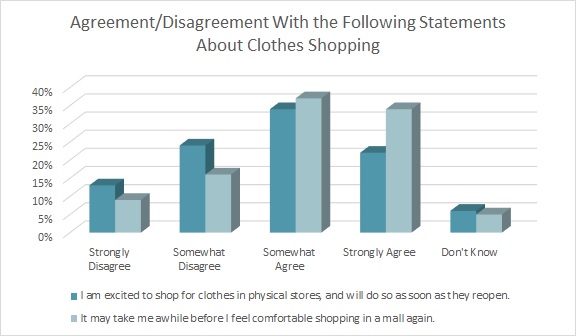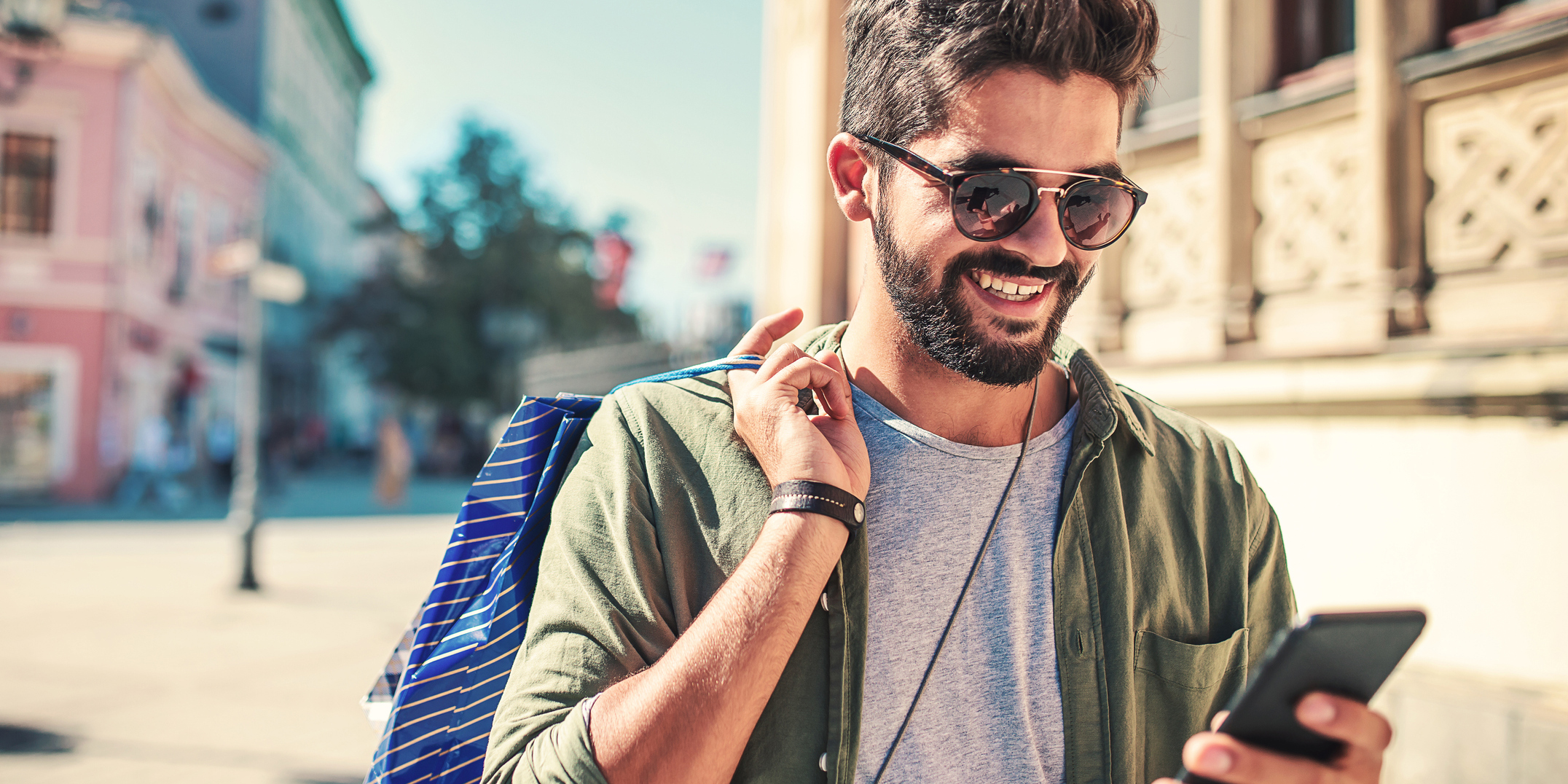After a couple of months with nothing to do but binge watch TV or go for quick grocery runs, consumers around some parts of the country are watching stores slowly open their doors again. While some shoppers have happily returned to shop in-store, post-pandemic anxiety among others is leading the retail apparel industry to figure out how to navigate suddenly unfamiliar terrain. It turns out the click and collect retail model that did well last holiday might come into play more than anyone planned just a few months ago.[quote]
“While many shoppers seem ready to go back in-store, particularly to buy clothing, the experience is anything but business-as-usual,” says Greg Petro, CEO of First Insight, a customer-driven digital product testing solution for brands and retailers. “The coronavirus has moved the industry away from high-touch to low-touch. The ‘new normal’ for retailers will be to work with shoppers in a hands-free way to help them to find what they need while also giving them the space to feel comfortable, particularly with high-risk groups like Baby Boomers. Not feeling safe trying on clothing also begs many questions on how retailers and brands will need to adapt their return and exchange policy in the coming weeks.”
First Insight research found that most consumers are ready to shop in-store for apparel (54 percent), followed by home improvement (36 percent), and footwear (32 percent). However, 65 percent of women say they will not feel safe trying on clothes in dressing rooms and even more (66 percent) say they would not feel safe working with a sales associate. While men are significantly more at ease, more than half (54 percent) say they won’t feel safe both in a dressing room or working with sales associates.
Since the COVID-19 pandemic began, 55 percent of consumers placed orders online for in-store or curbside pickup, according to Cotton Incorporated’s 2020 Coronavirus Response Consumer Survey (Wave 2; April 27-30). For 25 percent of shoppers, this was their first time placing a buy online/pickup in-store (BOPIS) order.
This mode of shopping stands to resonate with shoppers going forward because 71 percent of Coronavirus Response Consumer Survey respondents admit, “It may take me awhile before I feel comfortable shopping in a mall again.” Further, 58 percent say they will buy more clothes online in the future. After the pandemic passes and stores reopen, the Coronavirus Response Consumer Survey research found almost a quarter of all consumers (23 percent) say they expect to have a stronger preference than before for buying clothes online.

Stores that offered BOPIS during the holidays already saw how a convenience for consumers could mean a growth in their sales. The global shutdown only accelerated its value. In its holiday recap in January, Adobe Analytics’ data showed revenue from click-and-collect increased 35 percent year-over-year for the season. In the 7 days leading up to Christmas, when shoppers were scrambling for last minute gifts, BOPIS numbers jumped 55 percent. Then, once the pandemic hit, such orders soared 208 percent between April 1 and April 20, according to Adobe data.
Despite most stores with apparel being closed, Target and Walmart remained open, as did some Kohl’s and Dick’s Sporting Goods locations. And they all offered the BOPIS option.
Virus-related delays in deliveries add to the appeal of purchasing new clothes online and picking them up the same or next day, rather than waiting days or weeks for their arrival.
Qudini, the global retail tech company, maintains that, “with no clear end-point to the required social distancing measures of the coronavirus pandemic, essential retailers with open stores need to enhance their online order/pick-up service.” The firm recommends stores digitize their in-store or curbside pick-up queue.
For instance, when customers are ready to collect their purchase, Qudini recommends software that allows a digital check-in via smartphone, where shoppers can also view their position in the queue and the expected wait time — without physically standing in line with others. The company also suggests using scheduling software to give shoppers the ability to book a pick-up time, both limiting their exposure in the store, while giving workers time to prepare the order. Finally, Qudini recommends investing in curbside pick-up. Stores can streamline the process by offering customers text, email or a weblinks to inform the location they’re ready to collect their order. Then, staff can deliver it to the car, eliminating the need for anyone to enter the store at all.
Most consumers (72 percent) say they look forward to shopping for new clothes in a physical retail store, according to the Coronavirus Response Consumer Survey data. However, the majority (60 percent) admits to feeling afraid these days.
As of this writing, many stores were not dealing with returns in an attempt to minimize the spread of COVID-19. Instead, they’ve increased the return window.
RSR Research’s Steve Rowen, managing partner, states shoppers had grown used to buying merchandise online and then picking it up in-store. But now, “once we go through the process of masking and gloving up, the urgency is on: the goal is to be in the store for the least amount of time as possible. By now, we expect those goods to be waiting for us the moment we arrive.”
RSR Research conducted a study on both BOPIS and BORIS (buy online/return in-store) and found that most retailers are in the same boat: the demand for both came on suddenly and powerfully, and no retailer really has it down. However, the firm says those who come out on top with this option will automate their processes ASAP. Its report recollects when ecommerce and, later, mobile commerce were embraced by shoppers. Those who were slow to adopt (and perfect) the technology lost ground or were left behind. RSR Research also points out that BOPIS and BORIS are opportunities for retailers to “strike back” at Amazon, as the behemoth doesn’t really have any retail locations.
“People are going to want to leave the house,” RSR Research states, “but will likely do so with an affected measure of caution for quite some time to come.”
